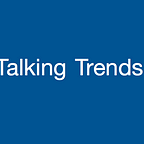Protecting Our Children: It’s More than Getting Sick - Eneida Roldan
The pandemic has impacted millions of lives; it has impacted our quality of life, interrupted events and memories, but the impact on our children has been exponential. Their environment has been severely challenged, they’re facing increased poverty, child abuse, domestic violence and changes in their education process. For many children, school is a way to escape the realities they face at home and the pandemic interrupted this routine.
Our children are struggling and we must do everything in our power to protect them, which means working together in the prevention of COVID-19. I moderated the Miami Chamber of Commerce’s series on Navigating COVID-19, where we talked about the impacts beyond illness made on the lives of children. I was joined by people who have witnessed these challenges firsthand, the superintendent of Miami Dade County Public School Alberto Carvalho, Marcos A. Mestre, MD, Vice President & Chief Medical Officer of Nicklaus Children’s Hospital, and Chad R. Sanborn, MD, FAAP, Pediatric Infectious Diseases, KIDZ Medical Services, Palm Beach Children’s Hospital.
Some of my insights are shared below.
“Children comprise 22% of the population. As of September 27th, approximately 14% of all cases of COVID-19 reported to the CDC were among children. Most cases in children are mild and treatment consists of supportive care. The American academy of pediatrics reports children represent 16% of all cases in the 49 states reported by age. Over 5.7 million children have tested positive in the united states since the onset of the pandemic as of September 23rd. Although symptoms are usually mild in children we have heard and read of children succumbing to this disease and we have seen an increase of cases especially with children back at school with the Delta variant.
“We know the workplace impacts made from COVID-19 have been across all industries.
“It’s not only in the health environment that we are seeing effects, but also within education. Teachers may not want to come back to the classroom or they cannot because of illness. The impact of the illnesses is an impact of absenteeism.
“As someone who’s in higher education, I have a passion for learning, but we have also seen a similar negative impact as elementary education in the higher education platform with the pivot to virtual learning. I can tell you from the perspective of the medical school, you can only imagine the struggles of having our students have to leave the hospital because of the number of cases there and having to do their hands-on lessons over a virtual platform. A lot of children do not have the access to the technology and i.t platform’s used in place of in-person education. How can schools focus on trying to get them kind of catch up?
“Whenever I talk about COVID-19, I obviously talk about prevention and why it is so important. The idea of prevention is not to ever get the disease and that’s really our main goal. One of the things we have seen in adults is the ‘post-COVID’ or the ‘long-haul COVID syndrome.’ While many adults that had COVID-19 may have experienced only a mild disease, months later come in with issues such as brain fogginess and GI symptoms. I’m wondering if the same thing is being seen in children because children have a much longer life.
“If there’s anything to convince any parent or any family member about the use of masks, vaccines, or any of the preventive measures that we have studied to be useful against this disease is the fact that we need to prevent the post COVID-19. There’s not a lot of talk about that and we go to the extremes of the mortality but the long sequelae which stays with the child and or the adult is extremely important as well. So if there’s anything that we can push to people to understand, it is how important that prevention is and that vaccines are used for prevention.
“We have navigated this pandemic in the U.S since early 2020. The world has been impacted since December 2019. We have come a long way in prevention, screening, testing, treatment and vaccines, however more must be done. Science and medicine will continue to fight for the health of populations. We hope to soon see the light at the end of the tunnel, so thank you everyone, please stay safe and get vaccinated.”
